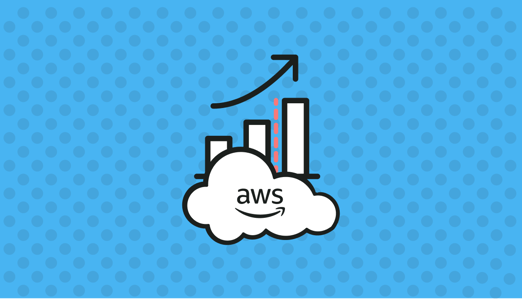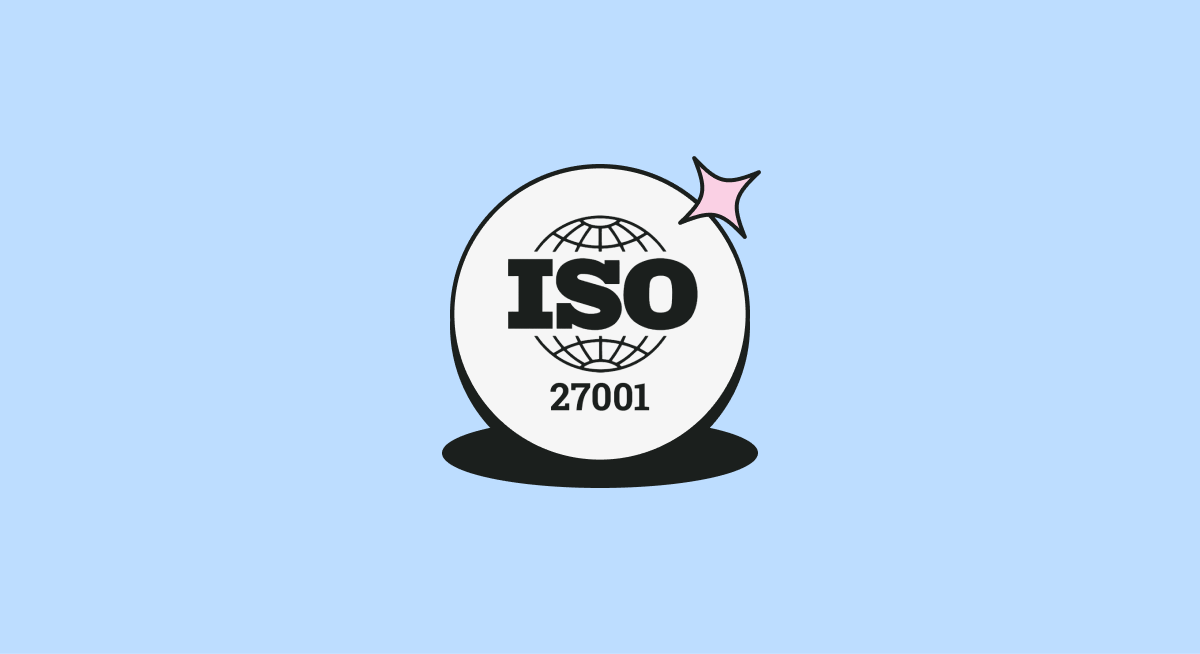
What Is AWS Cost Forecasting?
AWS cost forecasting involves predicting future spending on Amazon Web Services. This analysis is crucial for budgeting and resource management, providing insight into expected expenditures. It uses historical data to forecast costs, helping teams anticipate significant spending changes.
Cost forecasts allow organizations to plan better and allocate cloud resources efficiently. Accurate forecasting aids in avoiding unexpected expenses by predicting usage patterns and peak demands. The practice ensures financial resources are well-managed, supporting operational efficiency. Organizations leveraging AWS cost forecasting can optimize their expenditure, aligning spending with strategic business objectives.
This is part of a series of articles about AWS cost management.
Benefits of AWS Cost Forecasting
AWS cost forecasting provides numerous advantages for cloud financial management:
- Budget allocation: Predicting expenses enables teams to allocate budgets accurately and avoid overspend.
- Strategic planning: By anticipating costs, businesses can plan strategically, ensuring that adequate resources are available for crucial projects.
- Identifying trends: With cost forecasting, businesses can identify trends and adjust their usage accordingly, leading to significant cost savings.
- Long-term financial planning: Accurate predictions support long-term financial planning, ensuring that organizations can remain competitive while controlling cloud expenditure efficiently.
3 Types of Tools Used for AWS Cost Forecasting
Native AWS Tools
Native AWS tools are built directly into the AWS ecosystem. These tools provide users with basic features for monitoring and predicting cloud expenses.
The key advantage of native AWS tools is their integration with AWS services, allowing real-time data tracking and updates. Additionally, these tools are often free or included in AWS support plans, offering cost-effective solutions for businesses. However, they may lack some advanced features found in third-party tools, such as multi-cloud support or complex financial modeling.
Third-Party Cost Optimization Tools
Third-party cost optimization tools expand on AWS's native offerings by providing more advanced features and analytics. They offer multi-cloud support, which is essential for organizations using multiple cloud providers. These tools provide in-depth cost analytics, real-time monitoring, and automation features to optimize cloud spending.
Third-party solutions offer improved flexibility and functionality compared to native tools. They allow for detailed reporting, customizable dashboards, and granular control over cost forecasting. Automation capabilities, such as auto-scaling and resource right-sizing, can further reduce unnecessary expenditures. However, they typically require additional setup, and there may be costs associated with using these services.
Business Intelligence Platforms
Business intelligence (BI) platforms offer advanced data visualization and reporting capabilities. When applied to AWS cost forecasting, these platforms provide organizations with the ability to create custom dashboards, analyze complex cost patterns, and conduct time-series forecasting.
BI platforms can integrate with AWS data sources, allowing for comprehensive analysis that can include external data inputs like market conditions or business events. This level of analysis enables more sophisticated cost forecasting compared to native AWS tools alone. However, BI platforms often come with additional licensing costs and may require expertise in data analysis for setup and ongoing use.
AWS Tools for Cost Forecasting
The following native AWS tools can help you forecast your organization’s AWS expenses.
AWS Cost Explorer
AWS Cost Explorer is a tool that allows businesses to analyze and forecast their AWS spending with minimal setup. Accessible for all levels of users, from business owners to engineers, Cost Explorer provides a visual representation of AWS cost data, making it easier to understand spending patterns and project future costs. The tool allows users to view up to 12 months of past spending and forecast up to 12 months into the future, based on historical data.

Source: Amazon
One of the primary features of Cost Explorer is its ability to create cost forecasts with an 80% prediction interval. This means that the tool predicts future costs with a likelihood that the actual expenditure will fall within the estimated range 80% of the time. Users can customize their view by selecting specific date ranges and filtering the data by services, usage types, or tags, offering detailed insights into different aspects of their AWS environment.
However, AWS Cost Explorer has certain limitations. If there isn't enough historical data to generate an 80% prediction interval, the tool won’t produce a forecast. This is often the case for new accounts or services with less than a full billing cycle of data. Additionally, users cannot modify the prediction interval, and the tool does not support viewing more than 12 months of historical data. Cost Explorer is also limited in that it cannot produce multiple forecasts simultaneously or restrict access to specific datasets for different users.
Pros:
- Easy to set up and use, with no additional configuration needed after enabling the tool.
- Automatically generates forecasts when future dates are selected.
- Allows filtering and grouping by various metrics, such as services, usage types, and accounts.
Cons:
- Limited to 12 months of historical data and 12 months of forecast data.
- Cannot generate forecasts if insufficient data is available.
- No option to adjust the prediction interval beyond the default 80%.
- Lacks the ability to generate multiple forecasts at once or restrict access to specific datasets.
Amazon QuickSight
Amazon QuickSight is a fully managed business intelligence (BI) service that provides data visualization and analytics capabilities, including cost forecasting. QuickSight is useful for users who need to create detailed dashboards and visual reports based on their AWS spending data, integrating with other AWS services.

Source: Amazon
QuickSight leverages built-in machine learning (ML) algorithms to perform time-series forecasting, making it possible to predict future costs based on historical spending data. Users can create customized forecasts by adjusting parameters like forecast length, prediction intervals, and seasonality, giving them control over the forecasting process. QuickSight also supports "what-if" analyses, allowing businesses to explore different scenarios and understand how changes in usage might impact their costs.
Additionally, QuickSight offers pre-built templates, such as the Cloud Intelligence Dashboards (CID) from AWS Well-Architected Labs, which can be easily deployed to provide immediate insights into AWS cost and usage data. This feature is particularly valuable for organizations that are new to AWS cost management and want a quick start to understanding their spending patterns.
However, QuickSight can be more complex to set up and may require additional costs, particularly for large deployments. Users need to be aware of incremental costs associated with data preparation services like AWS Glue, Amazon Athena, and Amazon S3, which are often used in conjunction with QuickSight.
Pros:
- Forecasting capabilities with customizable parameters for more accurate predictions.
- Integrates with multiple data sources and supports real-time analytics.
- Pre-built templates like the Cloud Intelligence Dashboards provide quick insights.
- No ML expertise required to use the built-in forecasting features.
Cons:
- More complex setup compared to simpler tools like AWS Cost Explorer.
- Additional costs associated with AWS services like Glue, Athena, and S3.
- Limited "what-if" analysis capabilities when using multiple metrics in forecasts.
- Requires creating custom views for changing metrics or data granularity.
Amazon Forecast
Amazon Forecast is a flexible forecasting tool designed for businesses that require sophisticated cost predictions based on complex time-series data. Built on the same machine learning technology used by Amazon.com, Amazon Forecast can analyze historical data and predict future trends with high accuracy. This service is suitable for organizations that have in-house data analysis expertise and need to create customized forecasts tailored to specific business metrics.

Source: Amazon
Amazon Forecast offers the ability to include external factors, such as holidays or weather conditions, in its forecasting models, making it particularly useful for businesses where these variables significantly impact AWS usage. The tool provides granular control over the forecasting process, allowing users to customize time-series parameters and create forecasts for specific time windows. Forecast also supports "what-if" analysis, enabling users to explore different scenarios and their potential impacts on AWS costs.
Setting up Amazon Forecast involves a more complex process compared to other AWS forecasting tools. Users must prepare and transform their data before creating and validating predictive models. While this setup can be time-consuming, it allows for highly customized forecasts that can be tailored to the unique needs of an organization. Additionally, businesses must consider the costs associated with training and maintaining the forecasting models, which can vary depending on the complexity and frequency of the analysis.
Pros:
- Customizable forecasting with support for external variables like holidays and weather.
- Allows for detailed "what-if" analysis and scenario planning.
- Provides the most flexible and accurate predictions among AWS forecasting tools.
- Suitable for businesses with complex forecasting needs and data analysis expertise.
Cons:
- Complex and time-consuming setup process, requiring data preparation and model training.
- Requires knowledge of AWS infrastructure and statistical modeling.
- Additional costs associated with model training, which can range from $10 to $100 per session.
- Needs ongoing maintenance and retraining of models to ensure accuracy.
Best Practices for AWS Cost Forecasting
Here are a few best practices that can help you make effective use of cost forecasting.
Adopting a FinOps culture
A FinOps (Financial Operations) culture emphasizes the collaboration between finance, engineering, and operations teams to manage cloud costs effectively. By integrating financial accountability into the engineering process, teams can optimize resource utilization while staying within budget constraints.
In a FinOps culture, real-time cloud cost visibility is essential. Teams are encouraged to track, analyze, and take immediate action on AWS expenditures, ensuring cost-efficient resource allocation. This practice drives accountability, with engineers being directly responsible for the financial impact of their resource usage.
Additionally, adopting a FinOps approach promotes proactive cost management. Organizations can identify cost-saving opportunities early, such as rightsizing instances or leveraging reserved instances, which leads to optimized AWS spending over time.
Allocating AWS Resources Between Organizational Units
Allocating AWS resources across different organizational units, such as departments or teams, allows for more granular cost tracking and management. This strategy ensures that each unit has clear visibility into its cloud spending and can manage its own budget effectively.
Resource allocation can be done using AWS accounts, tagging, or cost allocation reports. AWS Cost Explorer and AWS Budgets enable organizations to monitor and report on spending by individual units, providing insights into which teams or projects are driving costs. This approach supports decentralized decision-making, empowering each unit to optimize its own AWS resources.
By setting cost boundaries or budgets for each unit, organizations can avoid overspend and ensure that resources are utilized efficiently. This also facilitates accountability, as each unit is responsible for managing its own cloud costs in alignment with broader financial goals.
Creating a Financial Plan for Each Organizational Unit
Creating a financial plan for each organizational unit involves setting cost expectations and budgets based on anticipated cloud usage. This process helps align resource allocation with the specific needs of each unit, preventing unnecessary overspending.
The financial plan should take into account historical usage data, forecasted growth, and any upcoming projects that may affect AWS resource consumption. Tools like AWS Budgets can assist in setting thresholds and alerting teams when spending approaches predefined limits. This ensures that each unit stays within its allocated budget, promoting financial discipline across the organization.
Incorporating financial planning at the unit level also allows for better prioritization of resources. Teams can adjust their spending according to business priorities, ensuring that critical initiatives receive adequate funding while avoiding waste in non-essential areas. This practice fosters a culture of cost-conscious decision-making throughout the organization.
Incorporating Business Events and Seasonality
Anticipating AWS costs involves considering business-specific events and seasonal factors. These elements influence demand and can impact cloud spending significantly. Incorporating them into forecasting models ensures more accurate predictions, allowing for expenditure alignment with business cycles and strategic objectives.
Understanding seasonality equips businesses with the foresight to manage their cloud budgets effectively during peak periods. By evaluating the impact of business events and adjusting forecasts accordingly, organizations can allocate resources wisely and minimize costs.
Continuous Monitoring and Optimization
Continuous monitoring of AWS usage and costs aids in sustaining optimal expenditure levels. Regular analysis ensures that any deviations from expected spending are addressed promptly. This vigilance helps organizations remain within budget and avoid wasteful cloud resource allocation.
Optimization involves routinely assessing cost-saving opportunities and amending strategies as needed. By implementing ongoing evaluation and adjustments, businesses can maintain alignment with their cost objectives. This approach fosters sustainability in cloud operations, ensuring that expenditures are consistently under control.
Learn more in our detailed guide to AWS cost monitoring
Combining AWS Native Tools with Third-Party Solutions
Leveraging a combination of AWS native tools and third-party solutions offers comprehensive insights into cost management. This hybrid approach enables organizations to capitalize on the strengths of both, ensuring robust analysis and forecasting capabilities. Third-party tools can complement AWS offerings with specialized features, enhancing cost management efficiency.
Integrating third-party tools can provide additional functionalities, such as enhanced data visualization or financial metrics not directly available via AWS. This combination delivers a more holistic view of AWS expenses, facilitating strategic adjustments and improved financial oversight. By harnessing combined solutions, businesses maximize their predictive accuracy and cost efficiency.
Taking AWS Cost Forecasting to the Next Level with Finout
Finout simplifies AWS cost forecasting by offering a comprehensive financial planning solution that makes budget management and forecast calculation easy. Our platform helps streamline planning cycles, saving time and reducing friction. It empowers teams to take ownership of their spend with clear communication, enabling you to plan ahead with confidence and precision.









